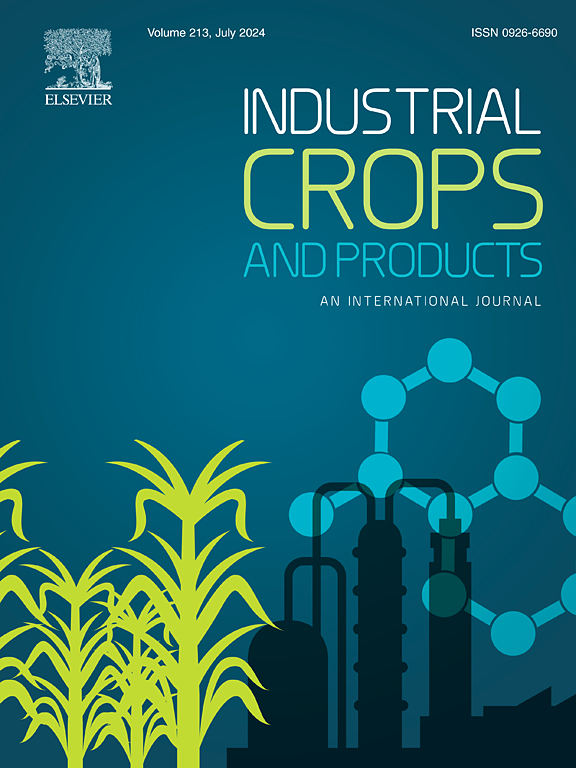酸水解和超声处理从甘蓝渣中提取纤维素纳米原纤维
IF 5.6
1区 农林科学
Q1 AGRICULTURAL ENGINEERING
引用次数: 0
摘要
亚马逊地区的农工部门开采açaí (Euterpe oleracea)所产生的大量废物,如果管理不当,可能会由于在陆地和水生环境中的广泛积累而对环境构成威胁。利用这种废物作为原料来获得纤维素纳米原纤维(CNF)可以避免使用不可再生资源并取代石油基聚合物。CNFs通常通过需要大量能量的机械加工获得,这是该加工路线的缺点。在本研究中,açaí残渣用NaOH和酸化亚氯酸钠进行碱性处理,去除非纤维素成分,得到的纤维素纤维作为原料,通过两步工艺获得CNFs,其中纤维素纤维用硫酸水解作为预处理方法,随后进行超声波处理。所得CNFs的宽度在9.14 nm ~ 7.22 nm之间,结晶度指数为75.78 %,热稳定性高,在228℃左右开始热降解,zeta电位高达43.97 m/V。结果表明,硫酸水解和超声波处理相结合可以从açaí残留物中获得CNFs,可用于生产纳米结构绿色产品。本文章由计算机程序翻译,如有差异,请以英文原文为准。
Cellulose nanofibrils from Euterpe oleracea residue extracted by acid hydrolysis and ultrasonic processing
The large amount of waste generated by the exploitation of açaí (Euterpe oleracea) by the agro-industrial sector in the Amazon, when not managed correctly, can become a threat to the environment due to widespread accumulation in terrestrial and aquatic environments. Utilising this waste as raw material to obtain cellulose nanofibrils (CNF) could avoid the use of non-renewable resources and replace petroleum-based polymers. CNFs are usually obtained by mechanical processes that require large amounts of energy, which is a disadvantage of this processing route. In the present study, the açaí residue was purified by alkaline treatment with NaOH and acidified sodium chlorite to remove the non-cellulosic components, and the resulting cellulose fibres were used as a raw material to obtain CNFs by a two-step process in which the cellulose fibres were hydrolysed with sulphuric acid as a pre-treatment method for subsequent ultrasonic processing. The CNFs obtained had widths between 9.14 nm and 7.22 nm, a crystallinity index of 75.78 %, high thermal stability, with the onset of thermal degradation at around 228 ºC, and a zeta potential up to 43.97 m/V. The results indicated that the combination of the sulphuric acid hydrolysis and ultrasonic processing allows to obtain CNFs from açaí residues that can be used in the production of nanostructured green products.
求助全文
通过发布文献求助,成功后即可免费获取论文全文。
去求助
来源期刊

Industrial Crops and Products
农林科学-农业工程
CiteScore
9.50
自引率
8.50%
发文量
1518
审稿时长
43 days
期刊介绍:
Industrial Crops and Products is an International Journal publishing academic and industrial research on industrial (defined as non-food/non-feed) crops and products. Papers concern both crop-oriented and bio-based materials from crops-oriented research, and should be of interest to an international audience, hypothesis driven, and where comparisons are made statistics performed.
 求助内容:
求助内容: 应助结果提醒方式:
应助结果提醒方式:


